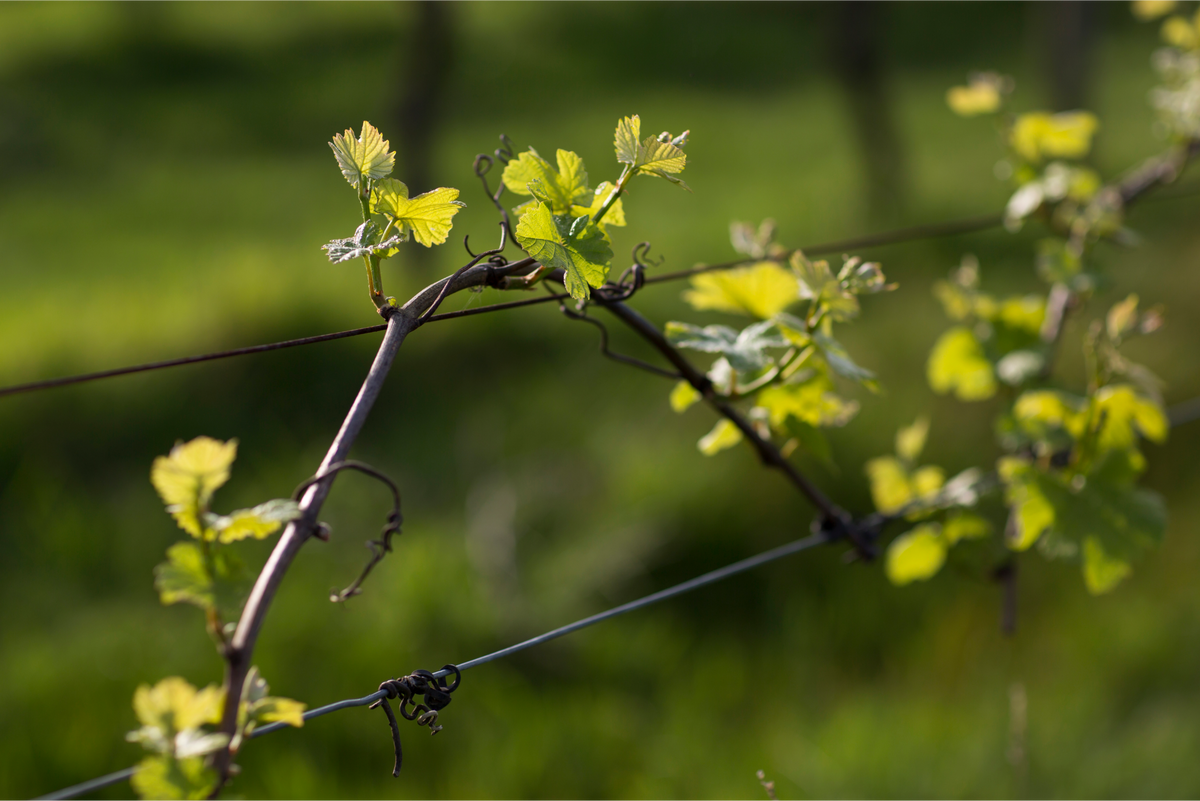
As vignerons we discern the subtle changes of vineyard performance for yield,
power, ripeness, structure and flavour spectrum.
Our canopy technique wash vines with sunlight from budburst in October to
senescence in May. Exposure leads the organic fight against disease and insects
as well as creating the colour, tannin and aromatics. Mornington Peninsula is a
cool region with many hours of cloud cover and so sunshine can be the limiting
factor for ultimate quality.
We select north facing slopes that maximise sunshine. Row width can be a conundrum
with narrow rows dampening vigour however, we choose a wider row of 2.5 metres
that invite wind and sun.
There is a lot of discussion around vine density and the role of increasing the
density to increase competition. The Burgundy model is very dense with 1 metre
x 1 metre. Our spacing of 2.5 metres x 1.2 metres accommodates a single arch of
10 to 14 buds and a converse thumb, or spur, with 2 buds.
Inspired by the arch-cane techniques of Alsace. Our pruning allows us to select the most fruitful bud positions on a longer cane whilst evening out the vigour along the
cane. We keep our vigour in check with hard pruning and follow up with early,
earnest shoot selection.
Pinot Gris and Pinot Noir in our cool region can nurture the precious and delicious
natural acid. We begin by committing to a small crop in spring with hard
pruning and shoot selection. We pull off any shoots that prove unfruitful by
November because otherwise they quickly become rampant. We try to tip by
flowering (mid Nov – mid Dec) to change the vines intent from vegetation to
creating fruit.
We rarely leaf pluck because we think it reduces acidity and speeds up ripening
when slowing it down creates varietal distinction and poise. However, plucking the leaves away from the bunches can let more sunlight in, especially attractive in a cool grey year. It’s a defining canopy technique in winemaking style.
The Italian varietals for Quealy are Friulano, Ribolla Gialla, Malvasia, Moscato Giallo and Sangiovese. They require a different approach because they are more fruitful and heavy-fruited than Pinots. These varieties ripen later, patience is essential to allow the Autumnal warmth to
dry the soil and cause the vine canopies to senesce their lower leaves, wholly
revealing the grapes to ripen in the sun.
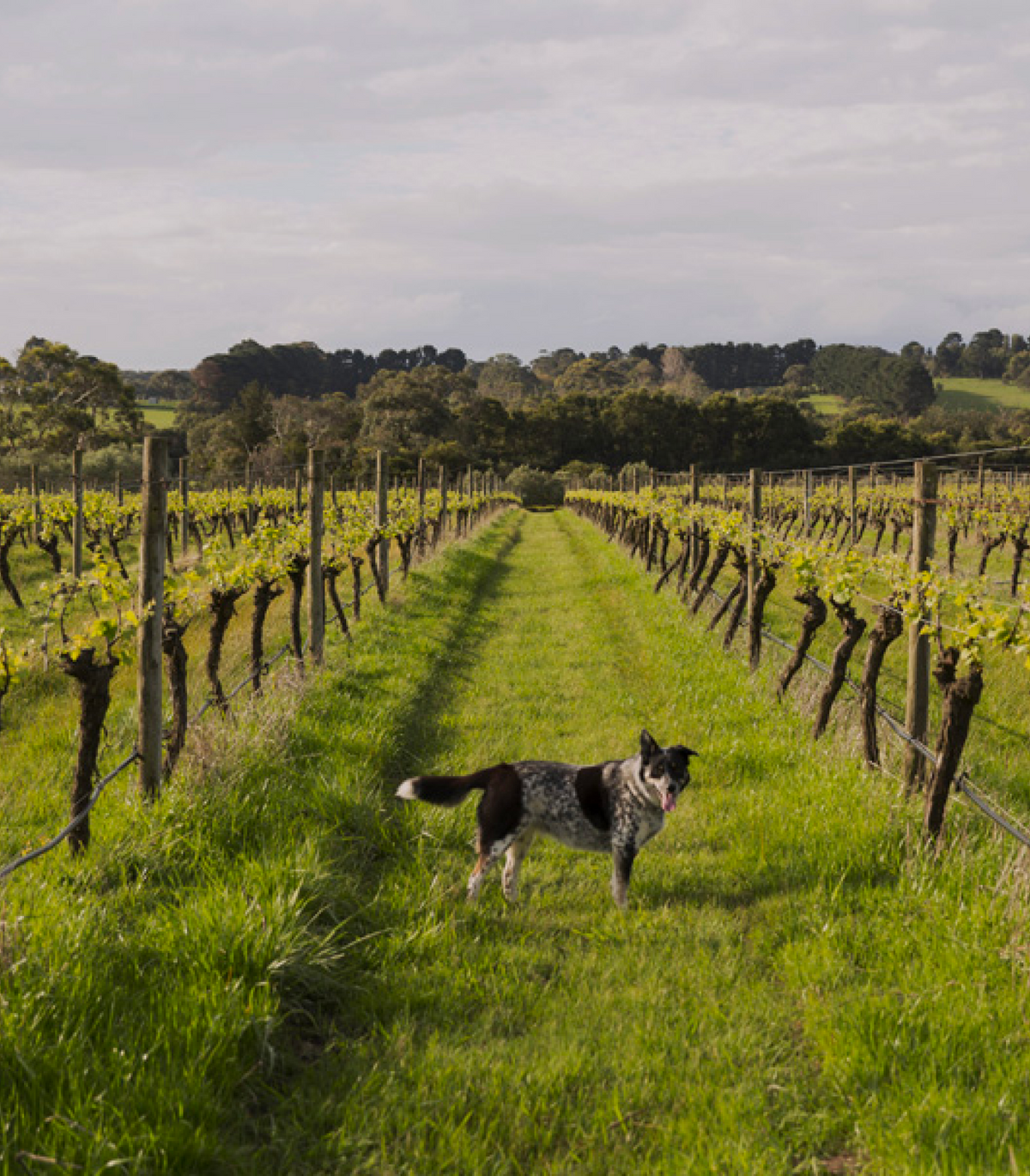
Bittern-Dromana Rd, Balnarring.
Certified Organic.
Seventeen Rows Pinot Noir, Chardonnay and Riesling blocks all established in 1982 by Joan & Stan Paul. The 3.5 metre vine width unusually wide to accommodate their orchard tractor. It’s a definitive width because of the extra sunshine on the vine and access of soil volume to fruit ratio. These wines all taste profoundly concentrated. Organic management of pests and disease is that little bit easier/ possible. Its where and how we started our organic viticulture journey.
The balance of the Pinot Noir at the winery vineyard was planted in 1995 and makes our KKO1 Pinot Noir.
We purchased the property in 2003 and were keen to run the vineyard organically. It’s a reactive journey implementing a bespoke regime to manage disease, pests, weeds, fertility and build soil and landscape of the future. We achieved Organic Certification in 2019
Over our twenty years we have planted
Friulano, Pinot Grigio, Moscato Giallo and, more recently, Malvasia Istriana and Ribolla Gialla.
Our winery vineyard is located on a gentle north-facing slope. Soils are shallow loams over sticky clay. We focus on organic matter incorporation to assist soil capacity to retain water and generate nutrition for vines.
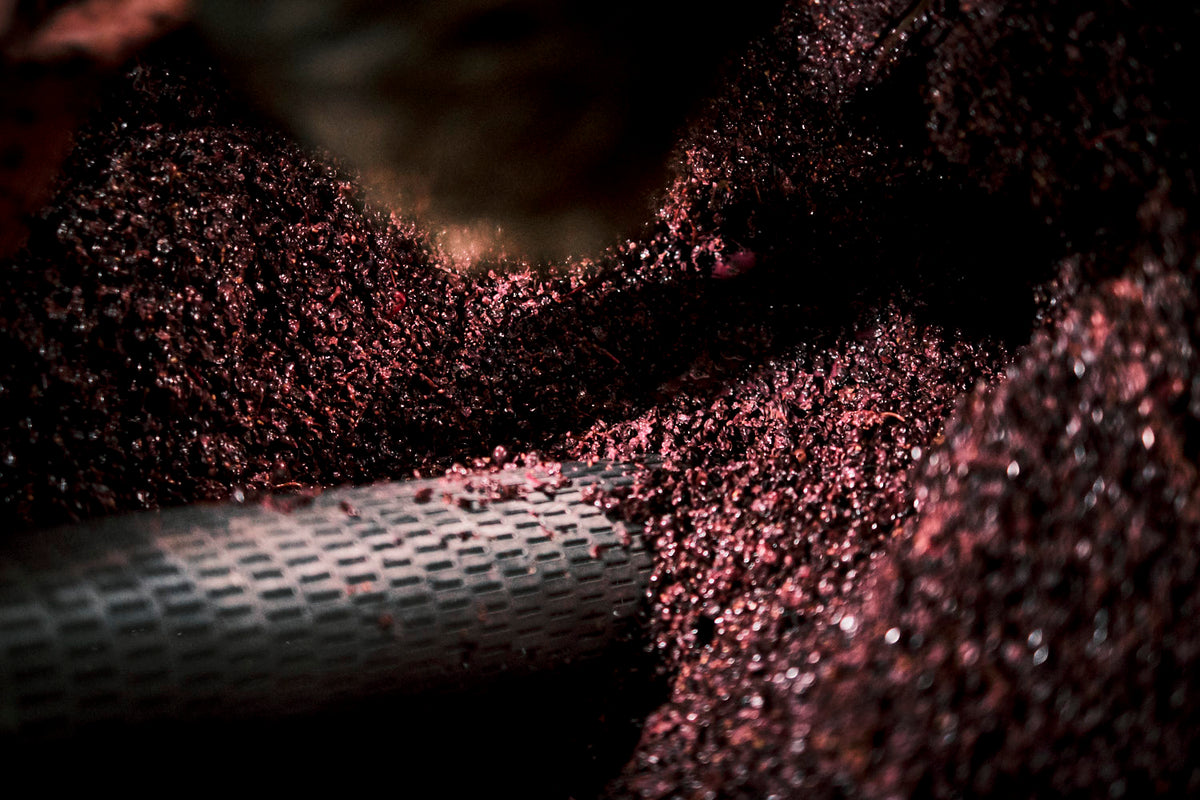
Warrawee Rd, Balnarring
Doctors Campbell & Christine Penfold established their vineyard in the mid 1990’s. Their three clones of Pinot Noir are 114, 115, and MV6. The 114 and 115 clones yield more consistently than MV6. Their longer looser bunch provide more tannin and
structure. The flavour spectrum is more luscious and cherry rather than the broody ambiguous breathy feel of the MV6 clone. MV6 clone provides enthralling perfume, slippery body and very fine high tone tannin. Great to have all three clones in the one vineyard.
Much of the soil is red clay washed down from Red Hill. There’s some sedimentary clay, like our Home Vineyard, and underneath is the sticky white clay.
Campbell & Christine Pinot Noir is powerful,
voluptuous, ripe and concentrated whilst the Pinot Grigio is delicate and forms part of our premium Pinot Grigio with the oyster shell on the label.
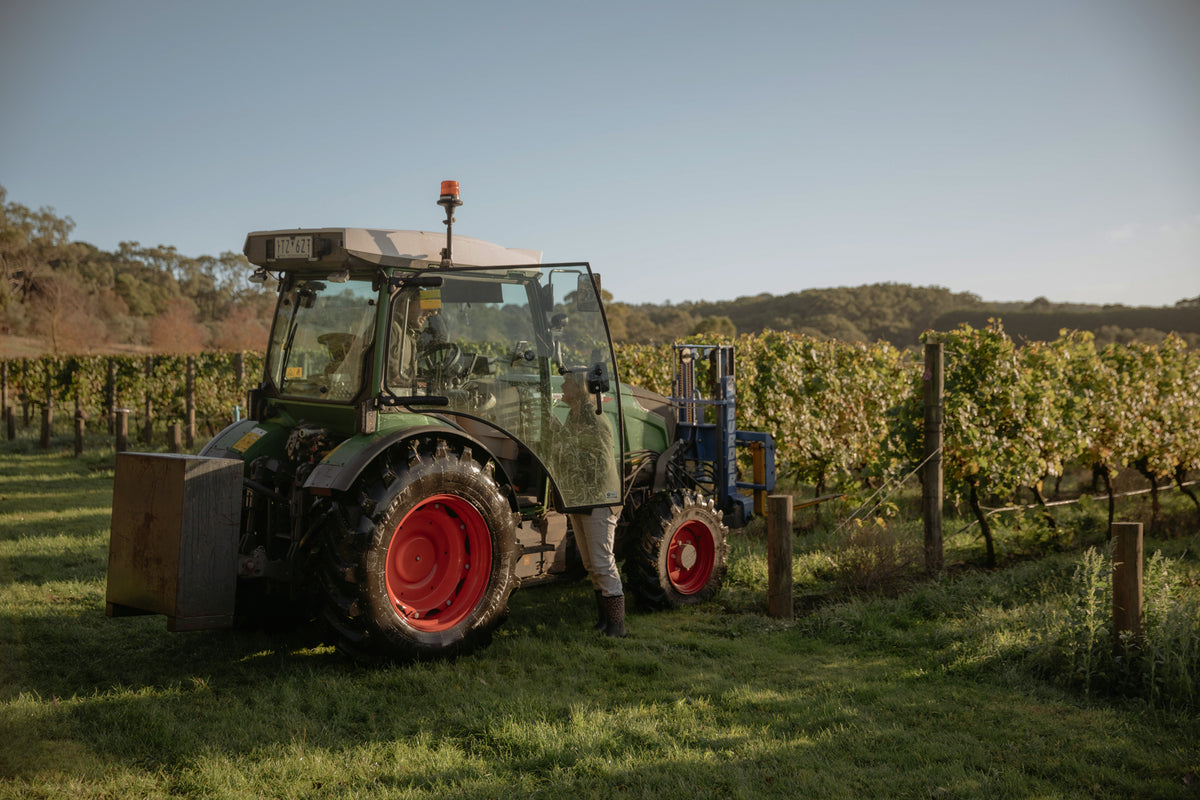
Musk Creek Rd Main
Ridge
Musk Creek vineyard is revered for Pinot Gris and Pinot Noir. Perched atop Musk
Creek valley, Main Ridge that leads into Westernport Bay. The aspect is NNE and
begins at 180m above sea level. The abundance of sunshine stalls vegetative
growth and is a balm to ripening every bunch of grapes. Elevation of 180 m
above sea level and cool Bass Strait breeze protect the delicate, ethereal Pinot aroma.
Musk Creek was planted in 1994. There are 2 hectares each of Pinot Gris & Pinot Noir
and half a hectare each of Muscat Rouge à Petits Grains and Chardonnay.
The vineyard was designed and planted by us all those years ago.
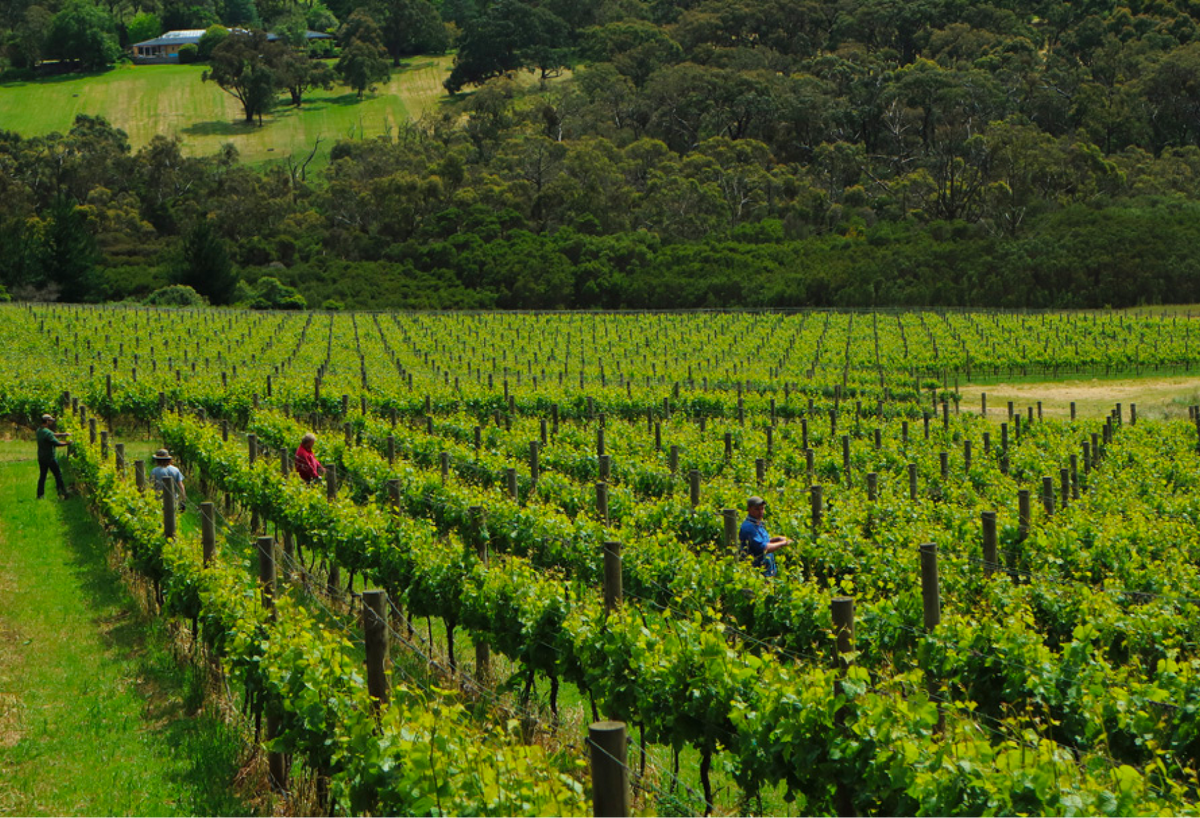
Bittern - Dromana Rd, Balnarring
Tussie Mussie Vineyard + Retreat is 3 hectares of Pinot Noir and Pinot Gris.
Ideally situated on a Northerly aspect with the rich red loam soil typical of Merricks North. The centre and lower blocks are planted to the 777 clone of Pinot Noir. Below and across from the vineyard are three small dams and natural bush – home to wallabies that occasionally chew the soft tips of vine shoots.
The vineyard is managed sustainably, the Fischer Twister bio-brush weeder is the main instrument for under-vine care. The late autumn cover crop is sown to enhance fertility and soil structure. Vines are tended by hand, to create a canopy entirely
penetrated by sunshine, assisting in the control of caterpillars and disease.
Quealy Tussie Mussie Pinot Noir is distinguished by crimson black colour, bright cherry and plum fruit aromas when young, and a vibrant velvety palate with subtle Pinot undertones of earth and mushroom.
The vineyards’ joyful moniker, suggestive of its former existence as a rose & herb farm, is captured by the hedonistic, floral nature of its Pinot Gris. Indeed, to drink the Noir and Gris over a long lunch is a great memory to take away from your time at the property.
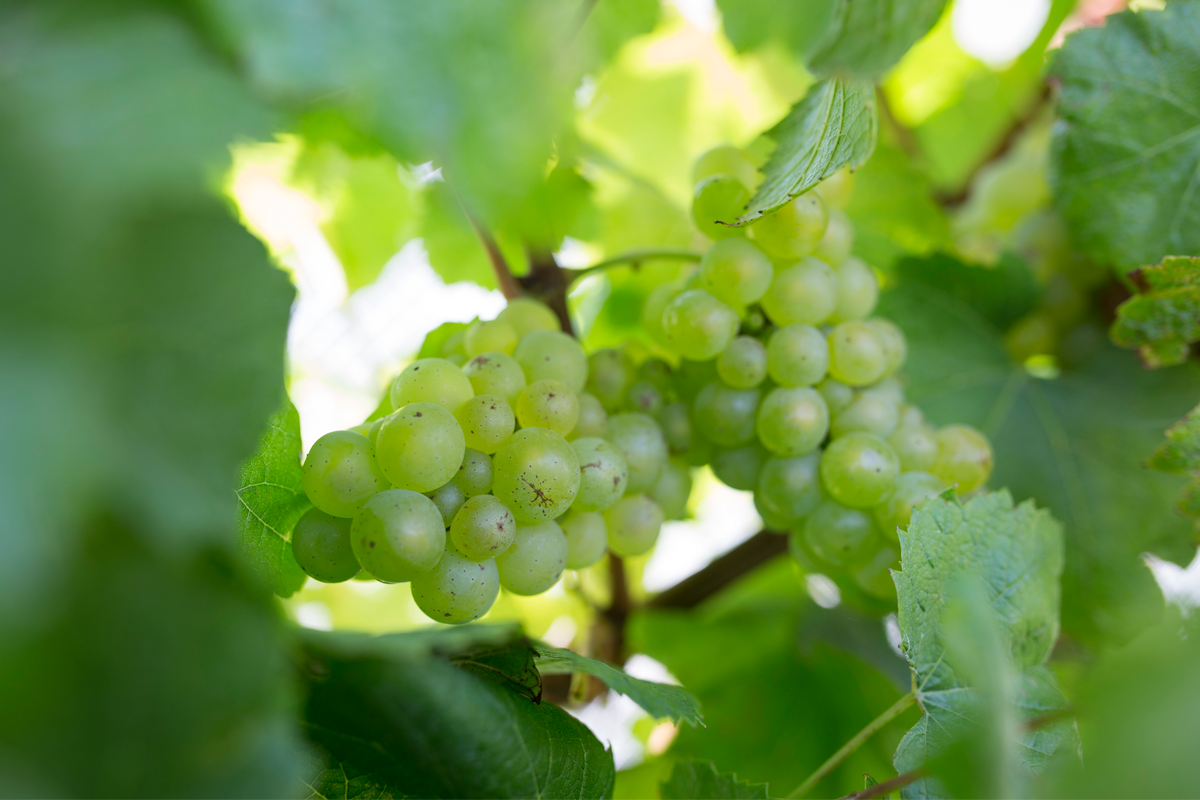
Baldry’s Road, Main Ridge.
The high altitude of 180 meters is a cooling influence upon Halarah’s slope of, NNW.
Halarah Vineyard flourishes upon the classic volcanic geology. Ancient basaltic rocks over time have weathered, to distinctive red, brown iron-rich soils that blanket much of Red Hill and Flinders. Known as red ferrosols, these soils boast deep
profiles, good structure, efficient drainage, and high fertility, making them prized for vineyards, orchards, and berry cultivation throughout the region.